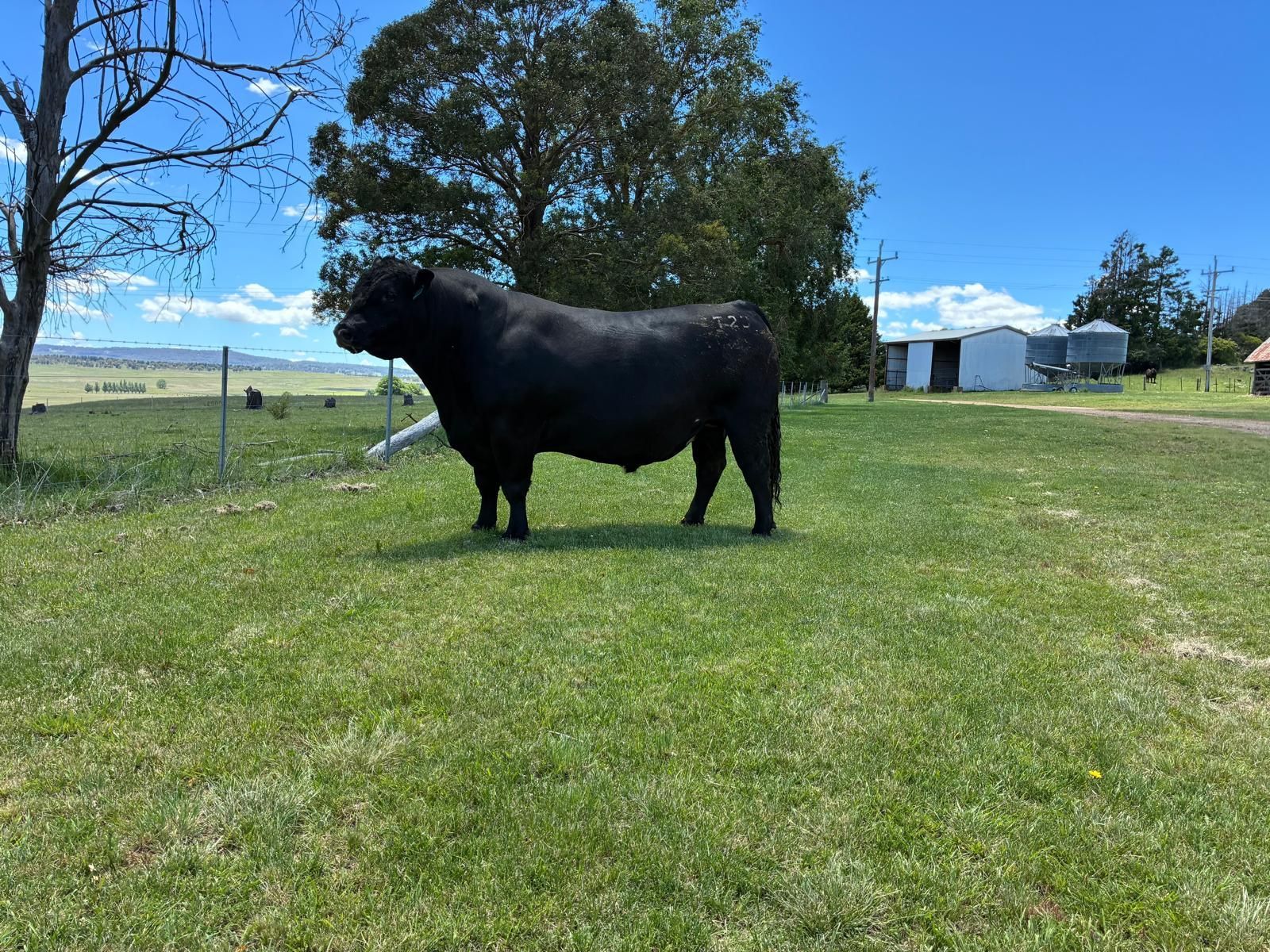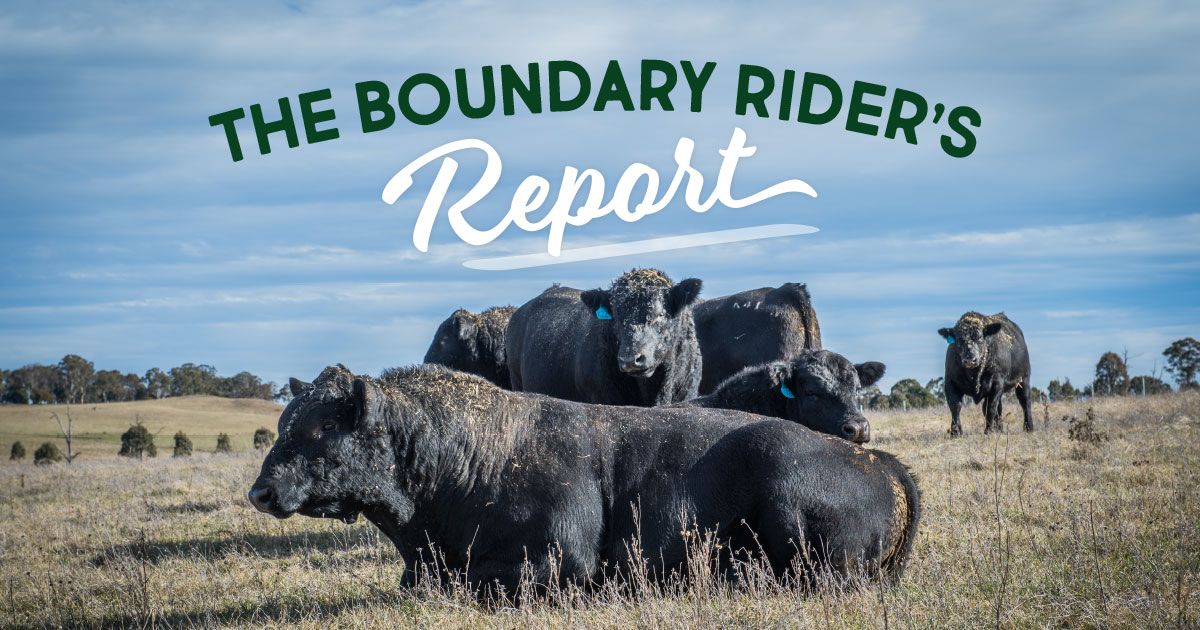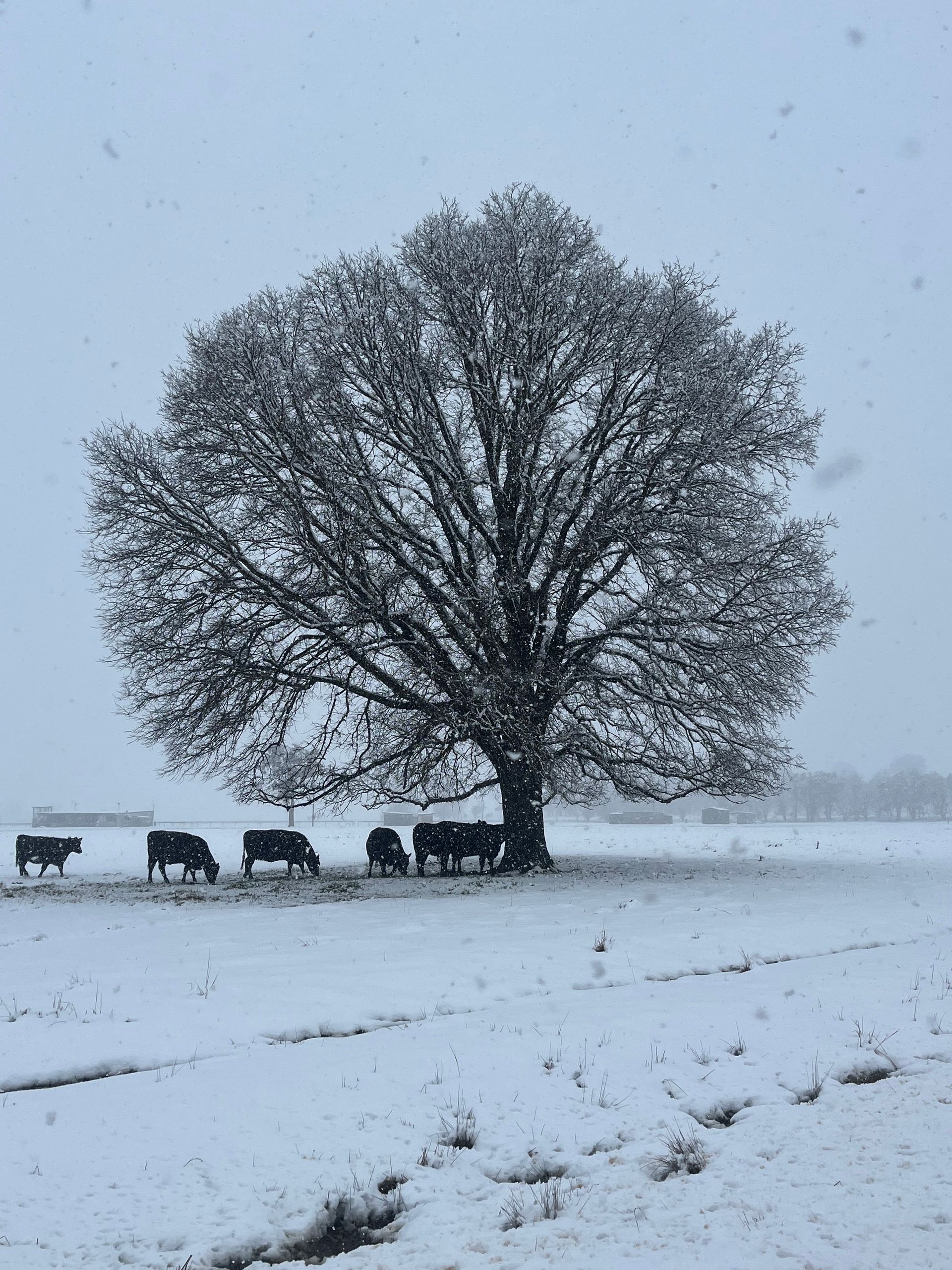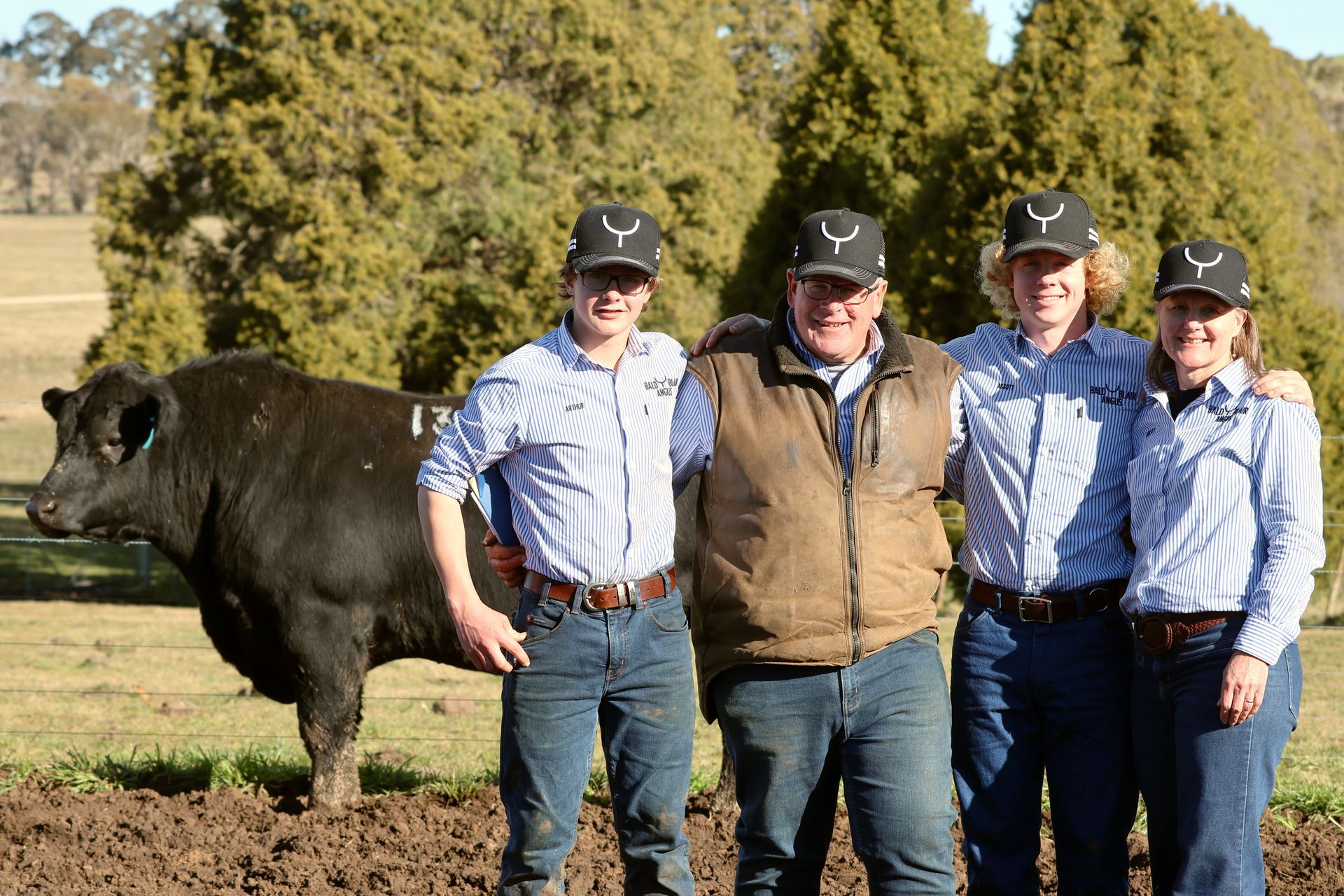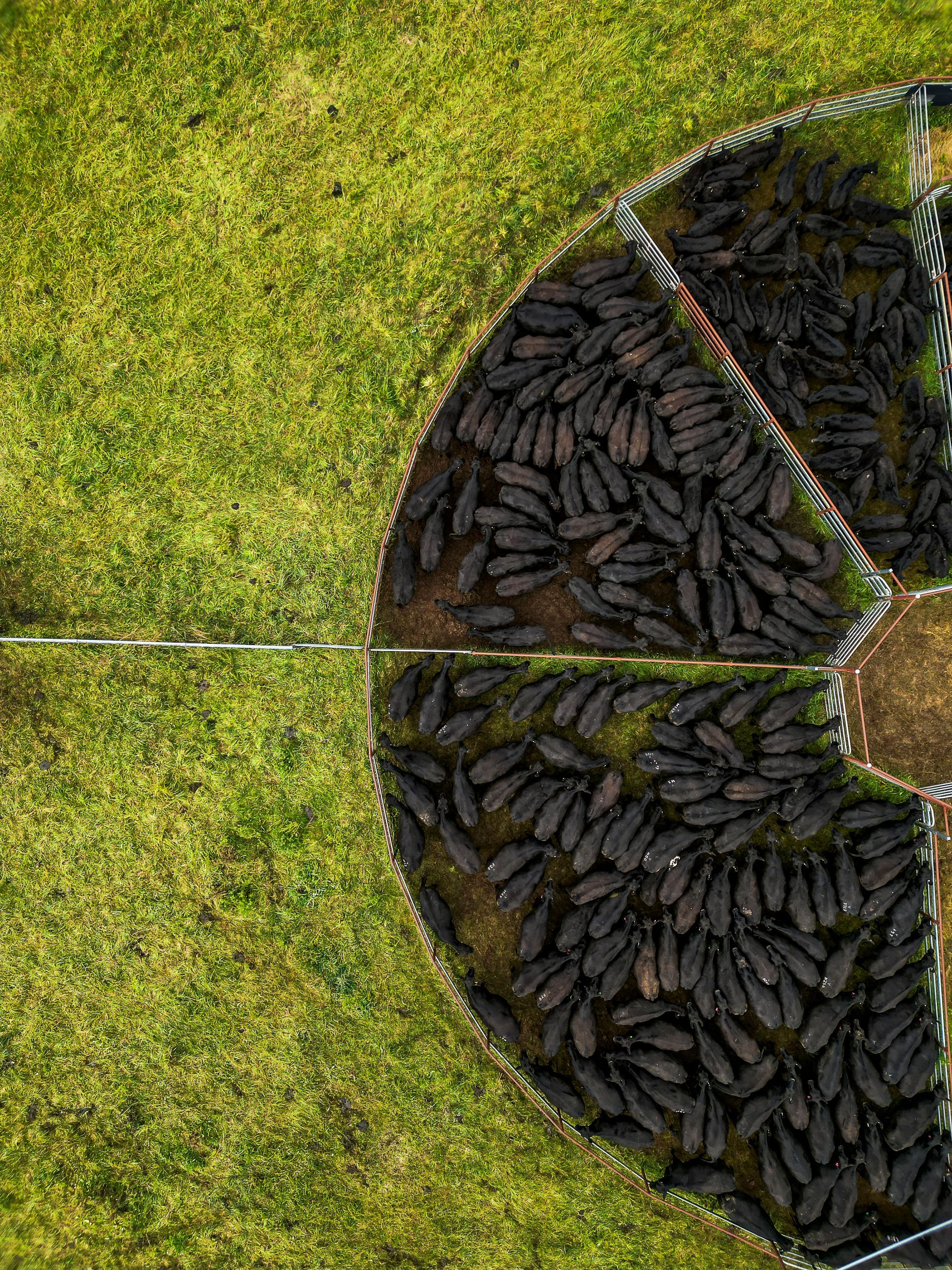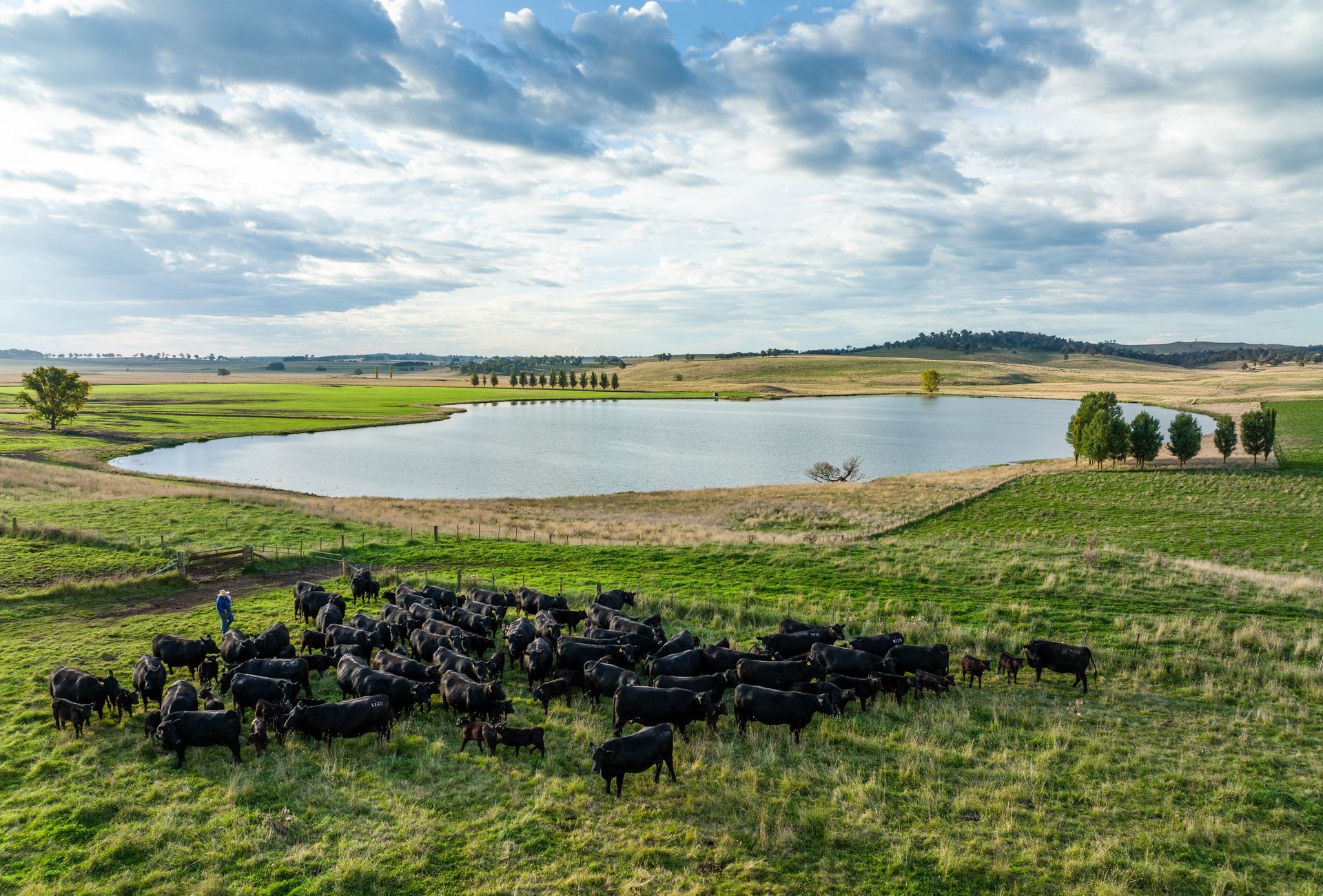The Boundary Rider's Report January 2021
Sam & Kirsty White • January 14, 2021
The Boundary Rider's Report January 2021
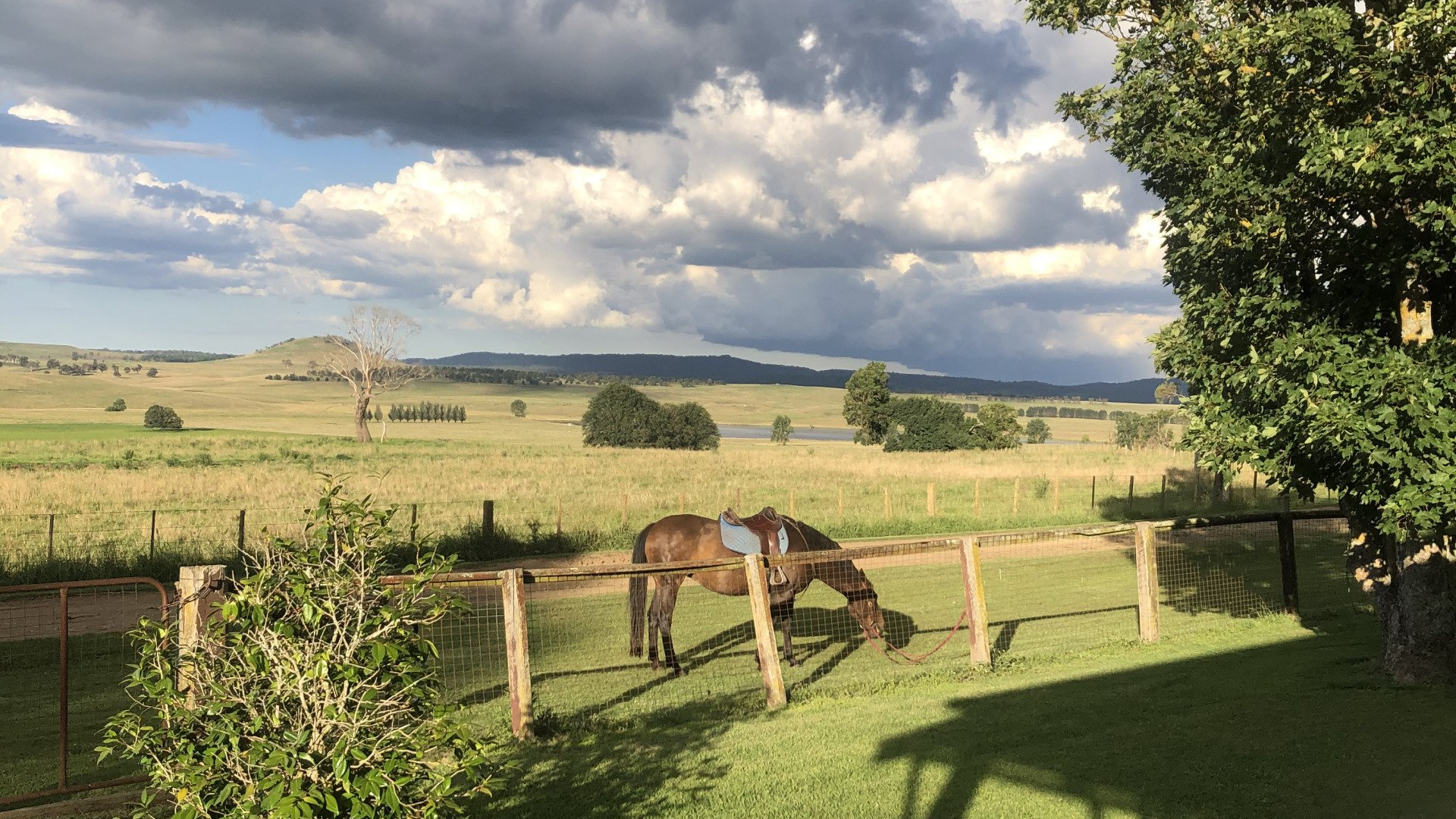
Welcome to the January 2021 Boundary Rider’s Report
Happy New Year!
Welcome to the January 2021 Boundary Rider’s Report for Bald Blair Angus.
The school holidays are nearly over and we are having a quick trip to the coast before the boys go back to school. We hope you have all enjoyed some family time over Christmas and New Years and your season is looking good for the start of 2021.
Snapshot:
Bald Blair Angus is located East of Guyra on the Northern Tablelands of NSW.
We have an elevation of between 1280 and 1420m above sea level.
Area: approx 2000 ha over 4 properties.
Enterprises: Angus Stud, commercial Angus herd, crossbred and merino sheep.
Seasonal Challenges:
Rainfall: Our average rainfall is between 850 mm
Year to date for 2020 we have received 905 mm at Bald Blair. To keep that in perspective we had 270mm in 2019. In December 2020 alone we received just over 200mm. What a difference a year makes. The water table is recharging rapidly with the creek flowing again and water running into dams at long last. Still as I look around at dam levels around NSW, some are filling quickly, some are not. So we still need much needed rain to top up the water table and water storages across this country. Our pastures are growing at such a rate, they have gone to head dropping much needed seed into the seed bank also.
What's on our plate:
Like Most, Recovery is the primary driver of our business decision making going forward. For each of us that may mean different things, buying restockers, heifers or PTIC maiden dams or cows, trading stock, be that steers, heifers lambs or ewes. For us we retained enough cows and heifers to get natural herd replacement of this herd fairly quickly seeing numbers return in the next 2 years. In this Blog we have a Guest Contributor on this topic. Thank you: Max Newsome, Livestock Officer for Northern Tablelands Local Land Services. Please read on to see his article entitled " Beef breeding operation recovery strategies."
- 2021 Bull Sale team - this team of bulls are all progressing well, considering they were born in a drought and were early weaned. We have some exciting new sires represented in this team and look forward to sharing more as we get closer to our sale.
- 2022 Bull Sale team - these calves have been marked and a tissue sample taken to conduct genetic testing to ensure proven pedigree (sire and dam) as part of our commitment to Parentage Assurance. In addition the first of our 2020 Autumn joined progeny are on the ground, these calves will make up our yearling bulls sold in 2022.
- We completed lamb marking and were very happy with our lambing percentages, some mobs as high as 180%; our flock average this year was 158%. While our ewe numbers are the lowest they have ever been, we are able to grow our flock again with available pastures. We have purchased some merino ewe lambs and will continue to look for opportunities to purchase additional ewes to rebuild our numbers.
- We have also completed weaning these lambs and sold our first lot into the Guyra sale yards on Wednesday, 13th for $186.50 straight off the ewes. We are very pleased with this result and look forward to finishing the remaining lambs over the coming weeks. Have you seen the new MLA lamb ad - well worth a look - we will share the link below.
- Embryo program : We synchronised our remaining commercial cows for an embryo program in November 2020. We are grateful to Ced Wise and Peter Brown for their assistance in enabling this opportunity to renew our herd. We will be pregnancy scanning in the coming weeks and will know how this program went.
- Planting sorghum for silage . While we have plenty of silage available for winter feeding we will again plant sorghum for silage next year. We will also do some pasture renovation on the road at Bald Blair, and Kolora
- We have Moisture probes going in on 2 properties over the next few weeks to assist in better understanding our water cycle and improving our management decisions going forward. More information will be available in our next Blog.
- Weeds management - knodding thistle, blackberries. We have had a blitz on knodding thistles and when I think we have them under control, we find more. A huge effort from our team - Tom, Jonathan and Fi. Thank you! Thank you! Our quick spray has been a very handy resource this summer.
- It is hard to believe we have been slashing this year and Abbott enjoys his time on the tractor during the school holidays . He is paying off a second hand mountain bike and is spending as many hours in the tractor as he can slashing, repairing roads and ramp access. He has also been shovelling sheep manure and selling it at the Bald Blair mailbox. It is surprising how many bags are picked up as people drive by and leave their payment in the money box that is screwed into one of the entrance fence rails.
- Arthur has been helping with Kelly’s Cottage , our farm stay on airbnb. It has been booked out over the school holidays and we have met some lovely families looking for a farm experience. They really enjoy our farm tours and our Bald Blair Angus merchandise is very popular with our guests, enamel cups and hand towels going to new homes as a reminder of their time learning about their food and fibre.
- If you have Bald Blair Angus merchandise we would love to see a photo of you using it - please feel free to share on social media and please tag. Otherwise just send through the picture, for us to share. Thank you.
- It was great to host students involved in the The University of New England's Growing Regional & Agricultural Students in Science (UNE GRASS) program. UNE GRASS leads the development and delivery of education programs that inspire students towards science careers, and helps create high-calibre science graduates who are business-ready for Australia's primary industries.
Activities over the next month:
- Our team will be reduced with school going back, so those of us remaining will have to work a bit smarter or harder!
- Planting trees - we have prepared a number of tree guards for planting and with the excellent moisture levels at the moment, we have ideal conditions to plant trees.
- Sewing pastures.
- Weeds management continues.
- Bull sale preparations continue.
Guest Contributor
Beef breeding operation recovery strategies
Max Newsome, Livestock Officer for Northern Tablelands Local Land Services
max.newsome@lls.nsw.gov.au
0427007190
The first three years post drought are often considered the hardest financially. This is because the greatest effects of destocking are felt whilst fixed costs remain. The extent of destocking determines the approach to drought recovery and hence impacts the return to positive cumulative cash balance.
One such scenario to explore is those breeding operations that destocked heavily, eg; 60% of their breeder numbers compared to lighter destocking rates of 20% of breeder numbers. If both examples are looking at a natural herd rebuild, the enterprise with heavier destocking rates will experience a sharp decline in their cash position and experience a very gradual increase to the cumulative cash balance. For those who lightly destocked, there is an increased pressure to cover costs in the first three years post drought however will bounce away post drought as it builds back numbers at a greater rate. It is important to keep in mind that it can take approx. 8 years to rebuild and get back to the level where operation stated pre drought from a natural herd rebuild.
A natural rebuild looks good in the first couple of years post drought as you do not spend any money on buying stock back in, however it will take a prolonged time to regain full stocking compacity. During this time, there is also going to be spare grass available in the system creating a DSE ‘hole’. Depending on the financial position of individual businesses, there are several strategies to consider to essentially plug that hole.
Some of the main methods graziers are considering include:
· Over select females Retain a larger proportion of heifer weaners
· Buy in weaner heifers as replacements
· By in PTIC females
· By in cow and calf units
· Trading cattle
Over select heifers (retaining a larger proportion of heifer weaners)
Operations that choose to over select and retain more heifers will forgo cashflow initially, as the heifers retained would normally be sold. The success of this strategy will depend on the level in which operations destocked to during the drought. For operations that only lightly destocked there is the potential in increase the rate of cumulative cash flow at a greater rate than that of a natural rebuild. In operations that destocked heavily retaining more weaner heifers may not provide a better cumulative cash flow to that of the natural rebuild. It is important to keep in mind that this option means that some heifers are kept that would normally be sold and may not have the structure or temperament that suits your herd.
Buy in Heifers as replacements
This strategy will place more financial pressure on the business in the short term as money is spent to buy in stock in an expensive market. However, when looking on a longer term horizon, this option has the potential to increase cumulative cash flow rate like that of an operation that has over selected heifers.
Buying in PTIC heifers
This has a high initial outlay for the purchase of heifers, yet the benefit is this option will provide a saleable calf sooner than that of the heifer thus generating income quicker for the business. Holding back 12 months and waiting for the market to potentially come back may be offset by a missed opportunity cost. In saying that, it still provides the potential for increase cumulative cash flow rate to that of buying in heifers.
Trading
There are several options to consider when looking at trading cattle and careful consideration needs to be taken into the risk of each option. It goes without saying whether you are trading sheep, steers, heifers, cow and calves etc. it is important that the net profit is achieved. If trading steers you would need at least $100/hd or $11/DSE profit for this to be an appropriate option being used in conjunction with natural rebuild of the herd. Each year the number of steers traded would decrease as breeder cattle take back their place. If these net margins are met this has the potential to increase the cumulative cash balance greater than that of the other strategies mentioned earlier.
It is important to note that the bigger the destock during the drought, the bigger the impact of your decision post drought on returning to a positive cumulative cash balance. It is well worth the time to sit down with advisors and make a strategic business plan for your individual operation.
The above information comes from modelling from Matthew Lieschke and Brett Littler used to help make decisions during these times. Please keep in mind that this is only modelling and that there is always the potential for shifts in the market.
Podcasts
- Future Farmers Network - Mentor of the Month - Episode 11 - Isobel Knight.
- The Northern Tablelands Local Land Services - Profitable Producer Podcast https://www.lls.nsw.gov.au/regions/northern-tablelands/key-projects/sustainable-agriculture/productive-producer-podcast-series
- Behind the Beef https://www.angusaustralia.com.au/behind-the-beef-episode-5-a-year-in-review-and-a-merry-christmas-from-us-to-you/?fbclid=IwAR1R8fk5gwFZc0LGgfW6PCNchcnpMXRPfZaj4AZkgsy018CdZJzqLVqVJeU
- MLA video : Make Lamb Not Walls https://youtu.be/aCIMYjqWxwA
Kelly’s Cottage Farm Stay https://www.baldblairangus.com.au/farm-stay-with-airbnb
Please feel free to give us a call, Sam White 0438 792 140 or Kirsty White 0427 722 908 if you have any questions or wish to discuss any of the content we have shared in this blog. We are keen to get your feedback, so if you have any topics you would like to learn more about, please let us know and thank you so much for reading our blog. We really appreciate it.
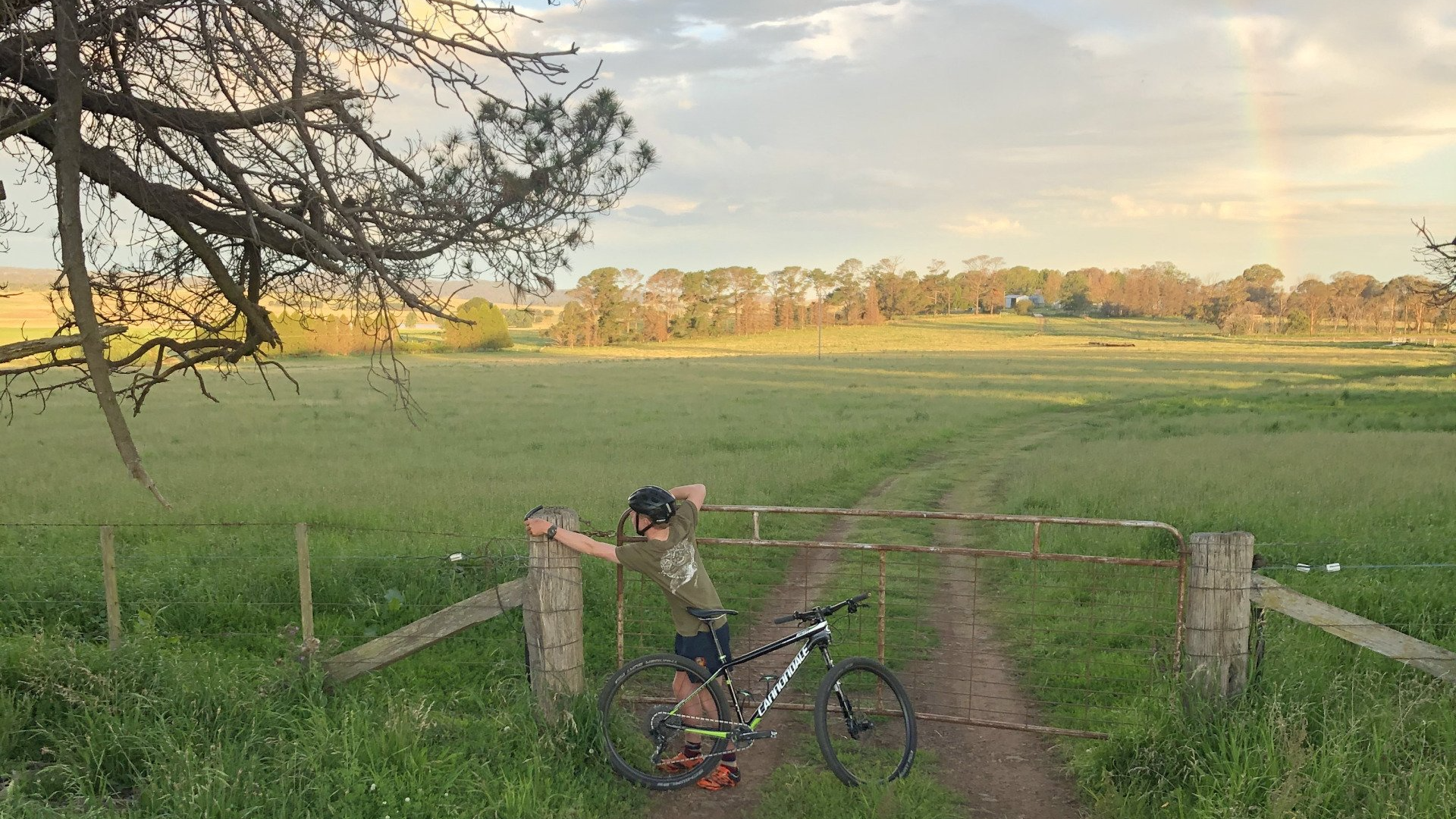
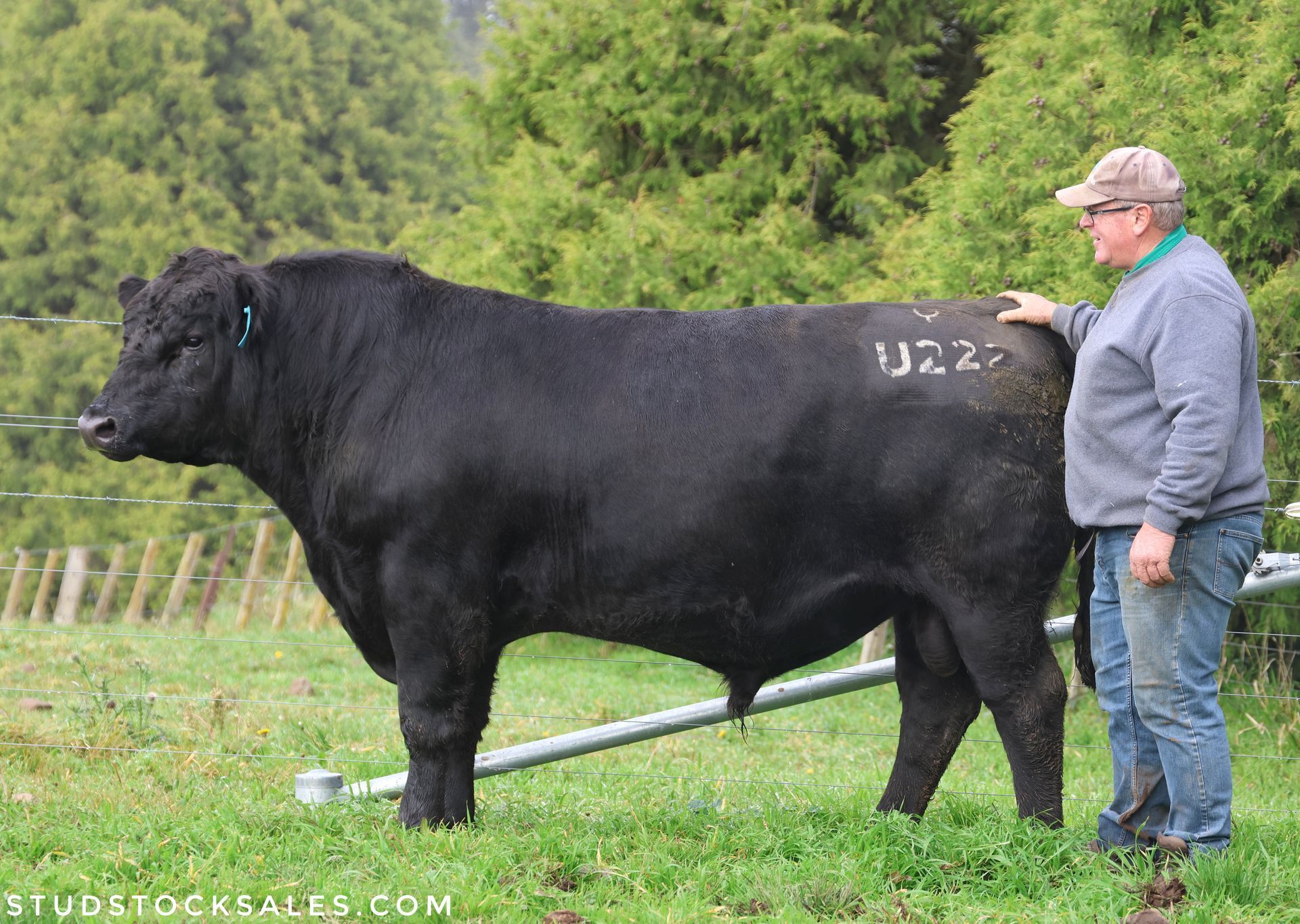
The June Boundary Rider’s Report shares updates on bull sale prep for 5 August, pasture repairs, and drone work at Bald Blair. It covers flood and drought impacts, upcoming events including the Open Day on 23 July and Ladies in Livestock, market news, and a wealth of podcasts, videos, and courses for Angus producers and rural communities.
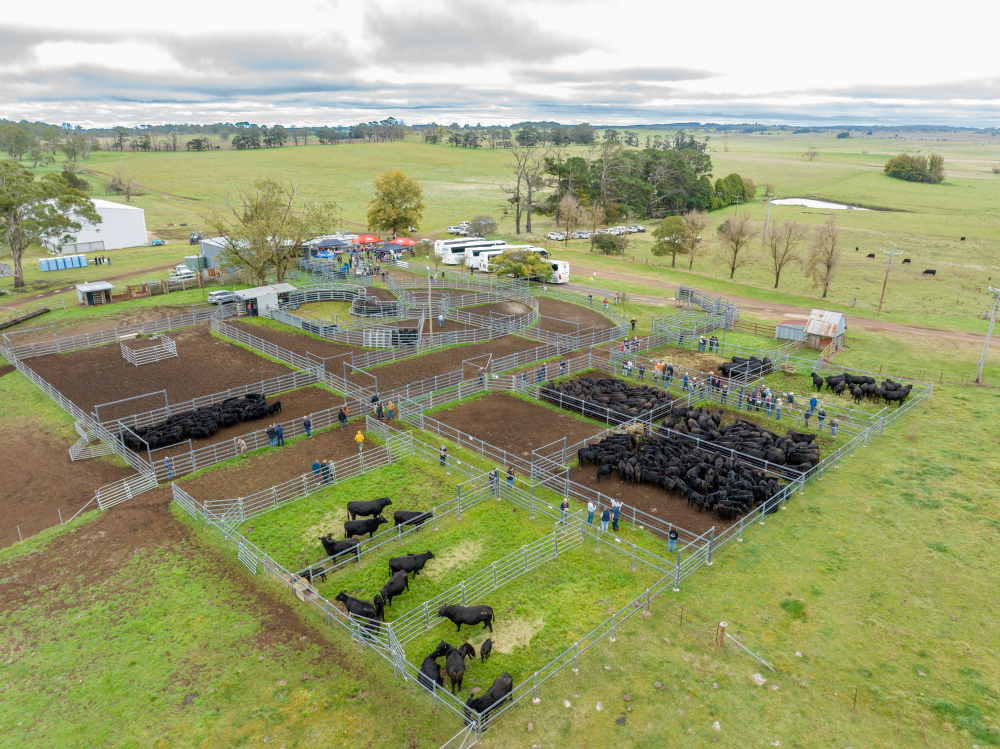
Catch up on Bald Blair’s May update! From Angus adventures and Open Day details to bull sale prep, markets, and podcasts—this month’s Boundary Rider’s Report is packed with insights, community highlights, and cattle news. Click through for stories, sale info, and expert tips from the paddock and beyond.
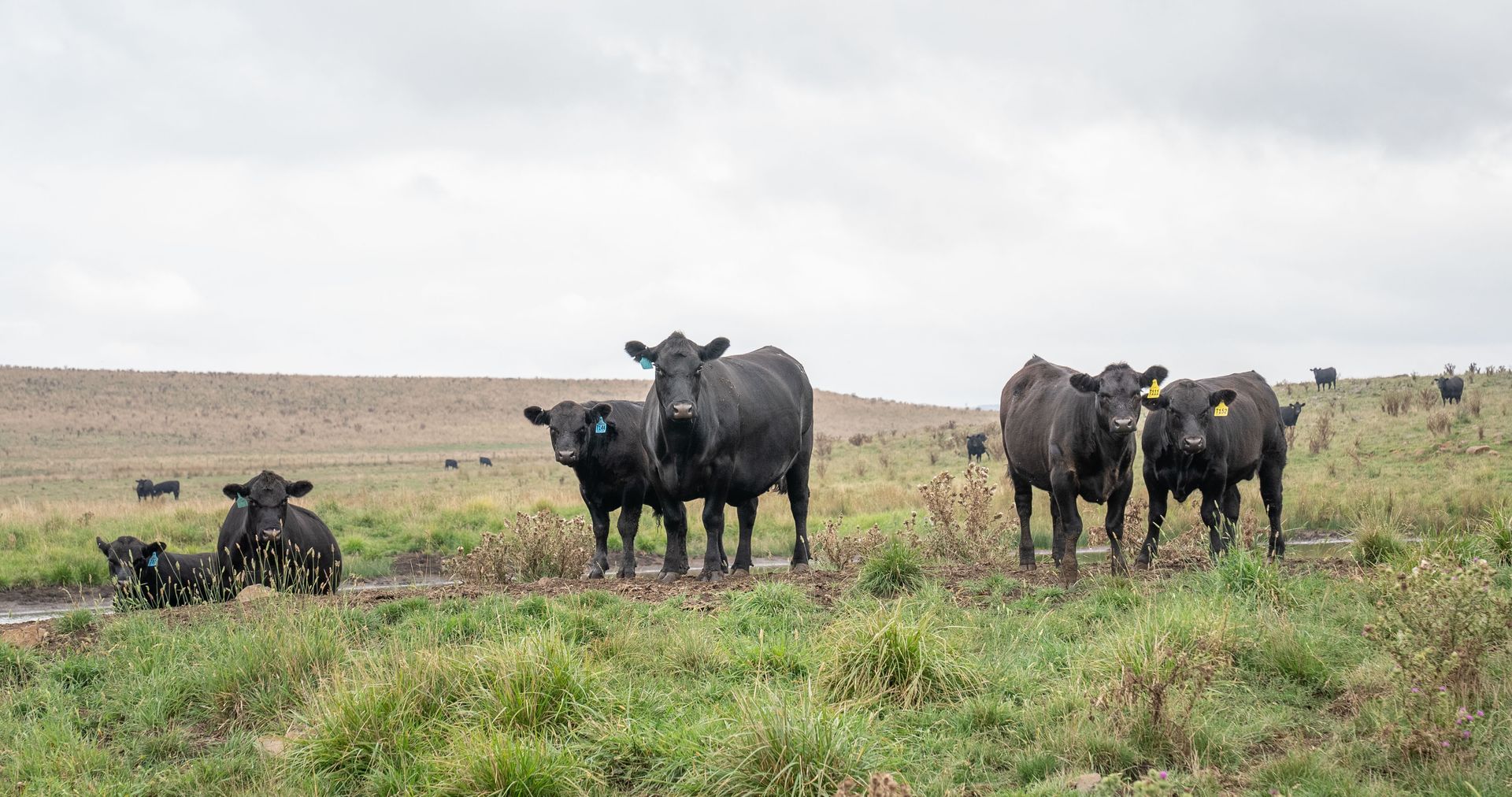
🚨 February Boundary Rider’s Report is live! 🚨 Catch up on everything happening at Bald Blair:
👋 Team news: Farewell to Mick, welcome Sam Savage!
🐄 Sales: Female Sale (8th April) & Bull Sale (5th August).
🌧️ Rain: 100mm+ in Jan = great pasture growth!
🚜 Farm updates: Calving, lambs shorn, paddocks prepped.
📅 Events & workshops: Stockhandling, Carbon EDGE & more!
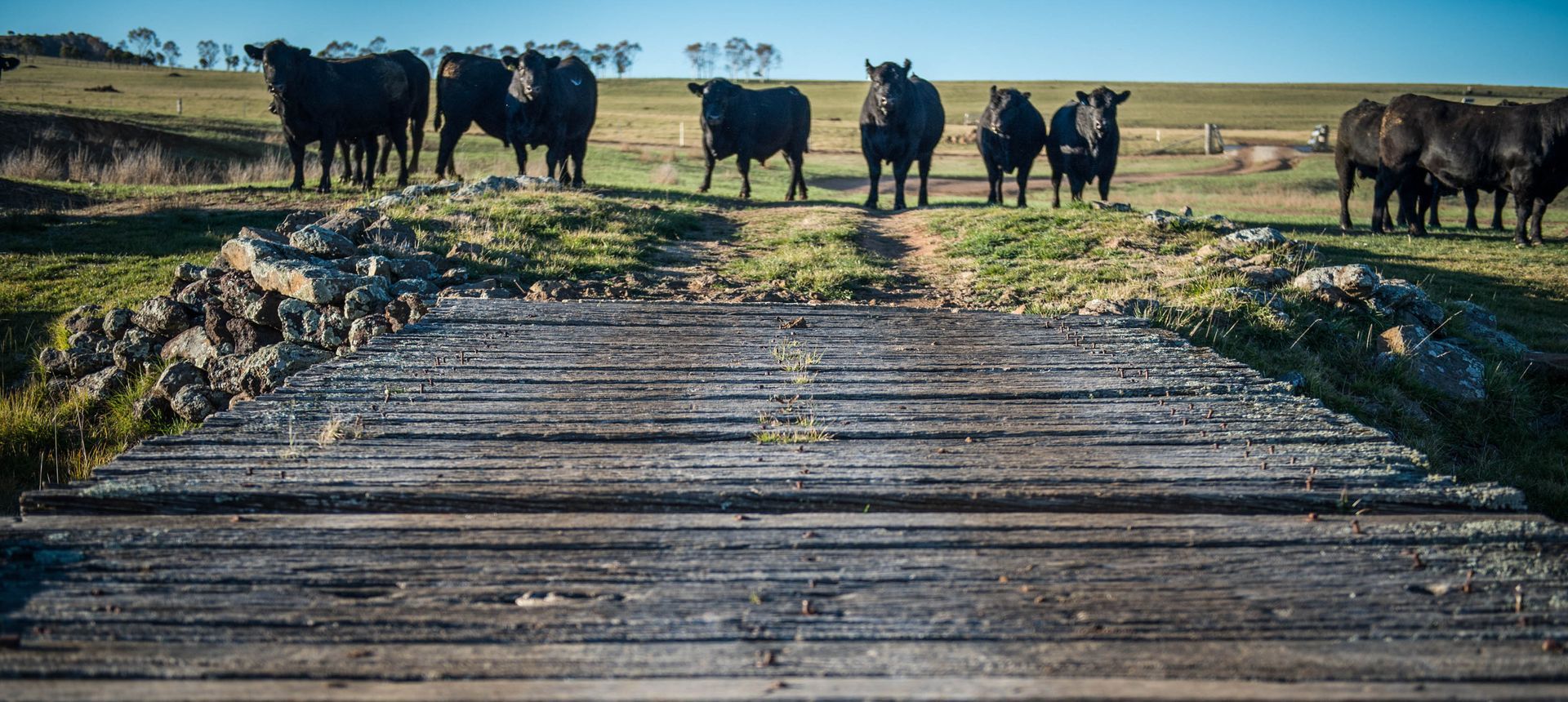
Boundary Rider's Report - January 2025 🐂🌾
🏖️ Holidays: NZ adventures, bush tennis, and family fun.
🌦️ Season: Dry pastures, storms (42mm at Gatwood), planning for La Niña.
📈 Market: Lambs, heifers, steers for sale; market trends awaited.
🐄 Cattlework: DNA testing, pregnancy testing, calving autumn heifers.
🌾 Pastures & 🌳 Trees: Hay cutting planned, seedlings thriving, more planting needed.
🚧 Fencing & Thistles: Tackling nodding thistles; fencing paused until April.
📅 Events: Bull Sale (Aug 5), Feeder Steer School (Feb 10-13), Angus Forum (May 7-8).
🎧📺📖: Podcasts, Eat. Race. Win., and holiday reads!
Stay connected! 📧

